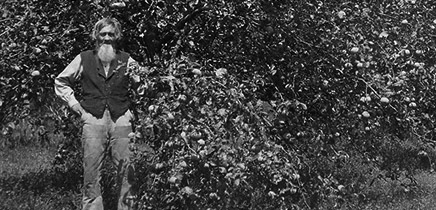Camp Manakiki was operated by the Pillsbury House in Minneapolis on the shores of Lake Waconia. The owners and staff wanted to offer a camp and nature experience to go along with the recreation program offered at their Settlement House. According to the camp brochure: “[Camp] presents an opportunity to acquire knowledge and skills which give the child a sense of achievement. It encourages broadmindedness, tolerance and understanding and brings out the value of co-operation both in work and in play. Above all it develops in the child self-direction, resourcefulness, and a creative attitude toward life.”
This camp was located in a few spots before finding a permanent home at Lake Waconia. Originally located on Bush Lake in Bloomington, that land had to be vacated. In Fall 1920, a committee was formed from the Board of Directors to find a new location. Committee member Walter Badger located land on Rock Lake in Eden Prairie. Three acres were purchased and the camp structures and supplies were moved before it was discovered that the lake had a poor bottom and the land nearby would not be available for expansion at any near date. Frustrated, Ed Currie, director of boys’ and mens’ work, went out driving in his 1912 Ford Touring car, vowing not to stop until a good location was found. He eventually reached the shores of Lake Waconia.
After finding the perfect location, Pillsbury House negotiated with landowner Frank Wagener to purchase four acres of his lakefront property, at $600.00 per acre, with the option of two additional acres as needed. The purchase was completed on June 21, 1921. The first building went up on the property in summer 1921, shortly after the land was purchased. That building was used for storing groceries and supplies. A main lodge was built later that winter- a 15 x 30 foot room with a stone fireplace, large dining porch, a kitchen/pantry, and a bedroom for the head worker. That first summer, 242 campers stayed twelve days at a time in primitive conditions- in tents with no floors or screens, on straw-filled mattresses, with drinking water over a half-mile away.
During the following seasons, many additions and improvements were added to the camp. The additional two acres were purchased first, a well was dug, and a newer, larger kitchen replaced the kitchen tent. Many sleeping cabins or bunkhouses were added, including one for nursery campers and their mothers. A station wagon, named the “Golden Chariot”, replaced the old 1912 Touring car to haul campers and supplies. By the 1930’s, the camp had indoor plumbing, a hospital, and a guest house. With the Indian mounds in the northwest corner of camp, campers and camp director Currie thought the camp needed an Indian name. The name “Camp Manakiki” was chosen, based on the Indian word for “maple grove” due to the large number of maple trees on the property.
Camp was open to anyone who would benefit from it: those needing physical build-up, those with built-up hostilities and emotional upsets, or just those wanting to experience outdoor living. By 1943, there were 27 buildings with modern equipment and a swimming pool. 900 children camped throughout the year. Soon after, a dance hall was added, and lessons became available for local residents not attending camp in swimming and Junior Life Saving.
Longtime director Ed Currie retired in 1963, with the position going to Yoshiro Tanji. The camp remained open throughout the late twentieth century, before being closed due to waning interest and decreased attendance.
Camp Manakiki brochure. Pillsbury House, St. Paul, undated.
“Red Cross Swimming Lessons Offered.” Waconia Patriot, May 20, 1971.
“Swimming Lessons Available This Year at Camp.” Waconia Patriot, June 9, 1966.
Waconia Heritage Association. Waconia, Paradise of the Northwest: The Lake and Its Island. Dallas: Taylor Publishing Company, 1986.
Secondary:
“$15,000 Swimming Pool to be Built at Pillsbury Camp.” Waconia Patriot, October 14, 1937.
“302 Youngsters Have Enjoyed Pillsbury Camp Manakiki Facilities.” Waconia Patriot, July 24, 1947.
“775 Waconians Swim at Pillsbury, Camp Manakiki.” Waconia Patriot, July 18, 1957.
“Local Camp, lake to be Featured in Minneapolis Paper.” Waconia Patriot, July 5, 1945.
“Pillsbury Camp Celebrates 40th Birthday.” Waconia Patriot, July 7, 1960.
“Pillsbury Pool Opens to Youths.” Waconia Patriot, July 8, 1948.
“Waconia Men Cooperate in Improvement at Camp Manakiki.” Waconia Patriot, June 4, 1959.


